Whiptail catfish - Farlowella acus
Scientific name: Farlowella acus
Common name: Whiptail catfish
Family: Loricariidae
Usual size in fish tanks: 13 - 16 cm (5.12 - 6.3 inch)
014
Recommended pH range: 6 - 7
Recommended water hardness: 3 - 10°N (53.57 - 178.57ppm)
0°C 32°F30°C 86°F
Recommended temperature range: 24 - 26 °C (75.2 - 78.8°F)
The way how these fish reproduce: Spawning
Where the species comes from: South America
Temperament to its own species: peaceful
Temperament toward other fish species: peaceful
Usual place in the tank: Bottom levels
Origin
The Whiptail Catfish (Farlowella acus) is native to the freshwater environments of South America, specifically found in Lake Valencia and the River Torito in Venezuela. These fish thrive in slow-moving waters rich in submerged vegetation, which provides them with both food and shelter.
Short Description
Whiptail Catfish are distinguished by their slender, elongated bodies and peaceful nature. In aquariums, they typically grow to a size of 13-16 cm (5.12-6.3 inches). Due to their timid nature, it is important to choose compatible tank mates. Ideal companions include Corydoras and small characins, which share a similar peaceful temperament. Be cautious with water changes, as this species is sensitive to sudden fluctuations. Instead of large weekly changes, it is advisable to perform 2-3 small changes per week using aged water to minimize stress.
Lifespan
Under optimal conditions, Whiptail Catfish can live for 5-8 years, making them a lasting addition to a peaceful community aquarium.
General Care
Whiptail Catfish prefer soft, slightly acidic to neutral water, with a pH range of 6-7 and water hardness between 3-10°N (53.57-178.57 ppm). They thrive in water temperatures of 24-26°C (75.2-78.8°F). Maintaining stable water parameters and a gentle flow in the aquarium is essential to mimic their natural habitat. A tank decorated with plenty of driftwood and live plants will provide them with hiding spots and grazing surfaces.
Food and Feeding
Primarily herbivorous, Whiptail Catfish should not be fed meaty foods, as this can harm their health. Their diet should consist of algae wafers and fresh vegetable matter. Suitable options include lettuce, cucumber, and peas. Blanching vegetables before feeding makes them easier for the fish to consume. A varied plant-based diet is key to maintaining their health and vibrant coloration.
Sexing
The sex of Whiptail Catfish can be identified by examining the shape of the snout. Males typically have a broader snout covered with short bristles, while females have a more streamlined appearance.
Breeding
Breeding Whiptail Catfish in home aquariums is possible but requires careful attention. The male will select and clean a spawning site, often on the tank glass. The female lays eggs, usually in the evening, and the male takes on the role of fanning the eggs. They typically hatch within 6-10 days. The crucial period begins once the fry hatch; they need to be fed immediately with vegetable matter and Infusoria to ensure survival. Note that Whiptail Catfish fry often have a high mortality rate, so maintaining water quality and providing proper food is vital during this stage.
Additional Notes
Whiptail Catfish are sensitive to water quality and environmental changes. To avoid stress, it is best to perform small, frequent water changes (2-3 times a week) using aged water instead of large weekly changes. This approach helps maintain stable conditions, promoting the health and longevity of these delicate fish.
Picture
Thanks to Tristan McKinnis!


 Adonis
Adonis  Lyre
Lyre  Bristlenose
Bristlenose  Gold
Gold  Bushymouth
Bushymouth  Spotted
Spotted 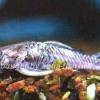 Medusa
Medusa  Bristlenose
Bristlenose 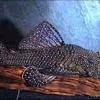 Starlight
Starlight  Spotted
Spotted  Catfish
Catfish  Bushynose
Bushynose  Bristlenose
Bristlenose  Green
Green  LDA-33
LDA-33  Snowflake
Snowflake  Gold
Gold  Gold
Gold  Bulldog
Bulldog  Dasyloricaria
Dasyloricaria  Butterfly
Butterfly  Amazon
Amazon  Twig
Twig  Spotted
Spotted  Spotted
Spotted  Lemon
Lemon  Pleco
Pleco  Peruvian
Peruvian  Zebra
Zebra  Pleco
Pleco  Hypostomus
Hypostomus  Pleco
Pleco  Suckermouth
Suckermouth  Spotted
Spotted  Woodeating
Woodeating  Golden
Golden  Sultan
Sultan  Multiradiatus
Multiradiatus  Marbled
Marbled  Pleco
Pleco  Dwarf
Dwarf  Dwarf
Dwarf  Dwarf
Dwarf  Oxyropsis
Oxyropsis  Orange
Orange  Blue
Blue  Clown
Clown  Royal
Royal  Blue
Blue  Rubber
Rubber  Goby
Goby  Wormline
Wormline  Para
Para  Tiger
Tiger 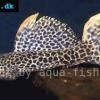 Leopard
Leopard  Spiny
Spiny 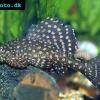 Marbled
Marbled 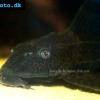 Amazon
Amazon  Common
Common  Sunshine
Sunshine  Golden
Golden